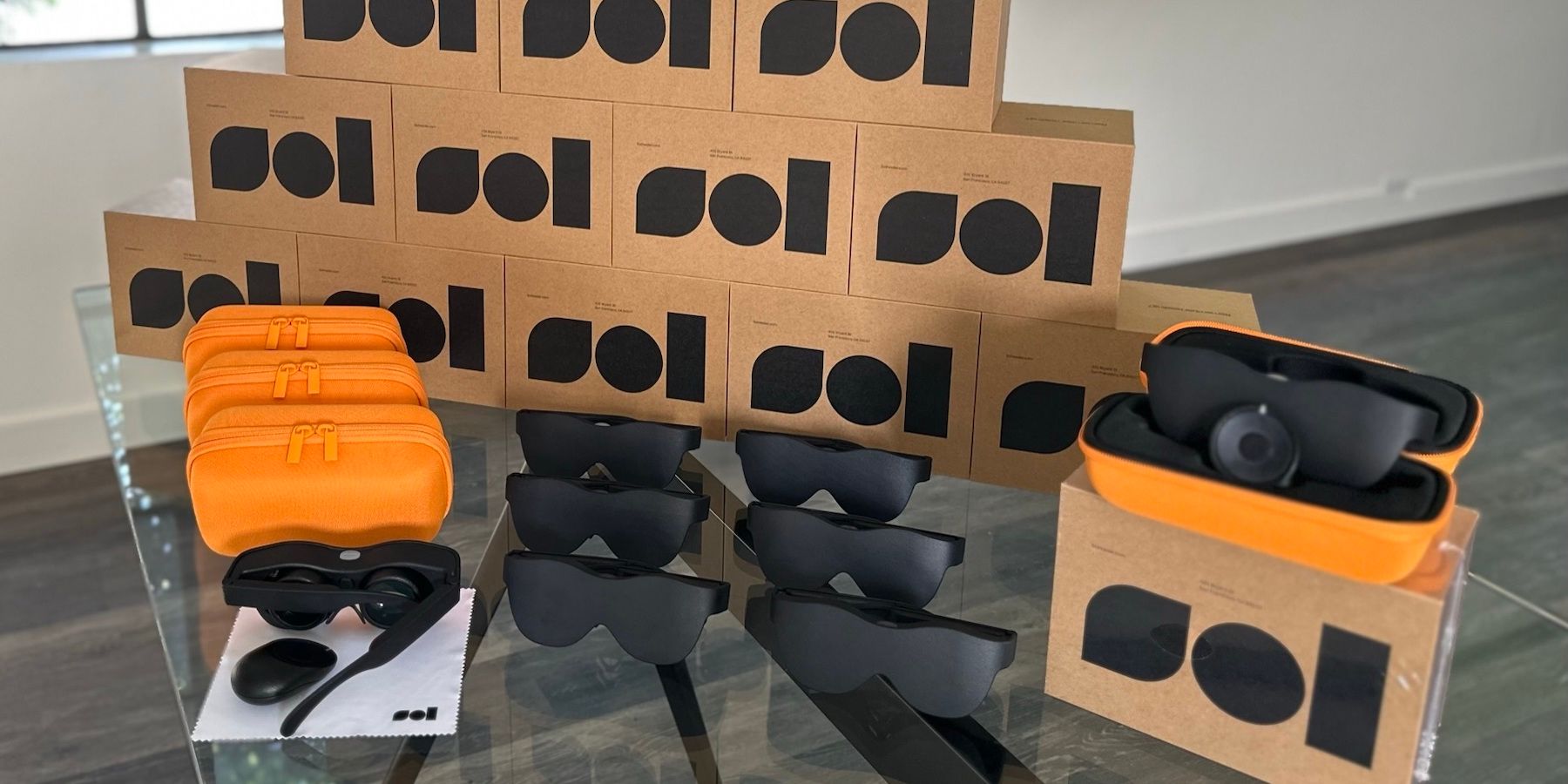E-Ink displays are used in different products such as smartwatches, phones, tablets, computers, and monitors, but the Sol Reader takes it even further by incorporating it into a VR headset form factor. E-readers are the most popular use cases for E-Ink displays, which makes sense because there isn't a need for a color display with a high refresh rate when reading books or documents. However, other products that have incorporated E-Ink displays have done so to take advantage of its low-power consumption.
The Sol Reader may be shaped like smart glasses, but it's actually just an e-reader in a different form factor. The device is reportedly pretty light at less than 100 grams, according to Brad Lynch of the SadlyItsBradley YouTube channel, who was able to test it. The manufacturer was able to achieve this weight thanks to the headset's lack of cameras, sensors, or a battery-toting head strap. The device itself is shaped like an oversized pair of sunglasses with a matte black finish.
A Niche Device That's Also Expensive
Since the Sol Reader doesn't have a strap to hold it in place like a VR headset such as the Meta Quest 2, the most suitable and comfortable position to use it is when sitting or lying down. Since the device is light, it shouldn't weigh down on one's face. Included with the headset is a wireless remote for flipping through the pages of a book or document. The Sol Reader has two E-Ink displays with pancake lenses. It also has adjustable IPD and diopter dials to fine tune viewing. There is no mention of a speaker, so users can't listen to audiobooks. However, it does have Bluetooth and Wi-Fi.
The Sol Reader has a battery life of up to 30 hours, which is way longer than the two to three hours users get from VR headsets such as the Meta Quest Pro and the Pico 4. The low-power E-Ink display is to thank for the long battery life. When running low on juice, users will be able to charge the Sol Reader via a USB-C port. At $350, the Sol Reader is a little more expensive than the base model of the Kindle Scribe, and $50 cheaper than the Meta Quest 2. According to Sol, the pancake lenses contributed to the high price tag.
Since Sol is a small company targeting a niche market, it can't take advantage of large scale production to bring the cost down. Furthermore, Sol doesn't seem to be providing an e-book service like Amazon's Kindle Unlimited or Prime Reading, so it can't pass off some of the cost to a subscription service. Nevertheless, the Sol Reader scores points for being a quirky e-reader, albeit an expensive one.
Source: Sol, SadlyItsBradley/YouTube, Sol/Twitter


